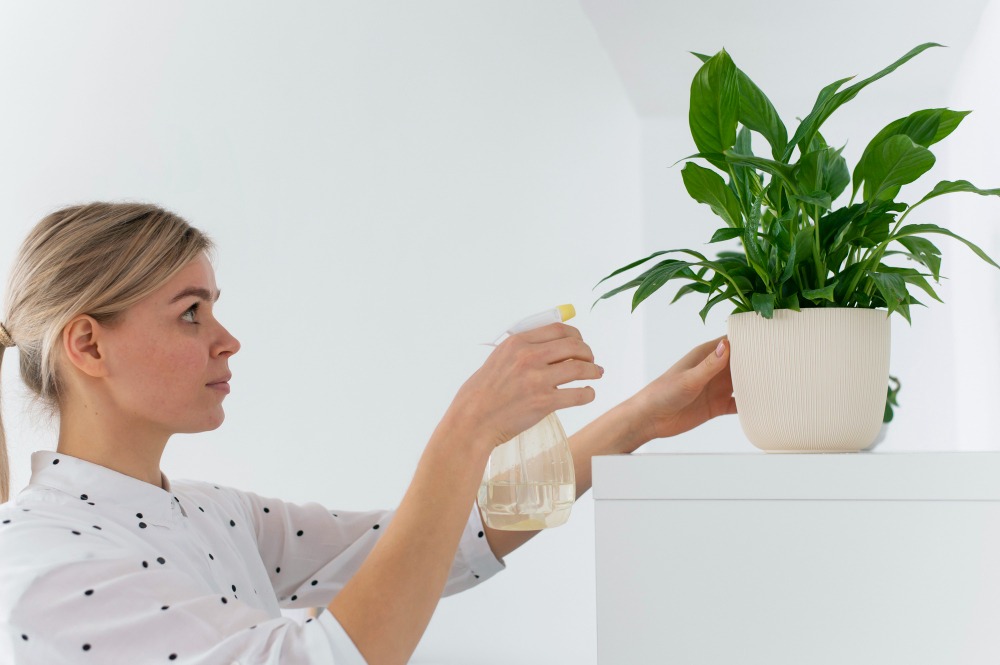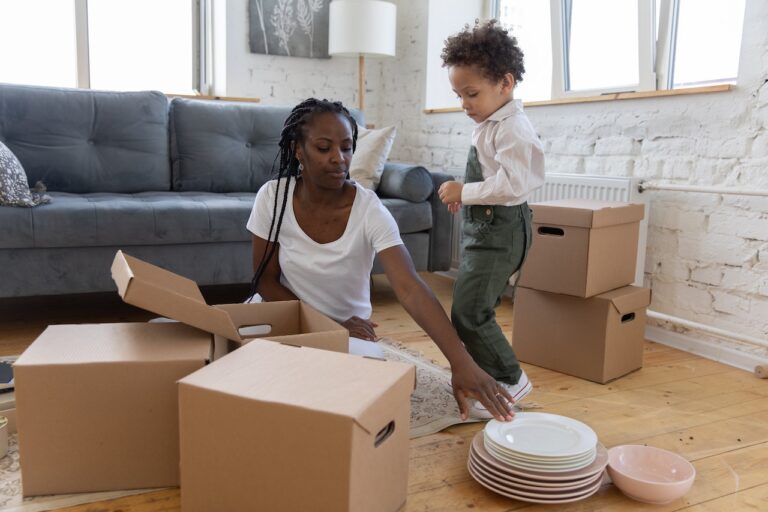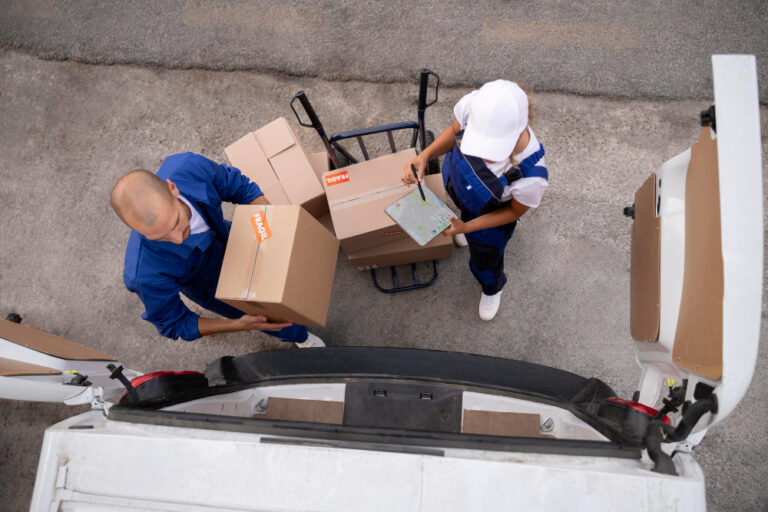Moving can be a stressful time for all involved, but when you’re relocating your plants, there’s an added layer of complexity to the task. Living in Vero Beach, you’re no stranger to the beauty and tranquility plants bring to your home, whether they’re sunning themselves by the window or providing a lush green corner to your living space.
This blog post aims to equip you with the knowledge and skills required to move your plants safely, ensuring that they reach their new home in the same health and vitality they’ve always had. We’ll emphasize the importance of proper handling and care throughout the process because each plant is unique, requiring individual attention and love during the transition.
In the upcoming sections, we’ll delve into the details of preparing and packing your plants for moving day, providing tips and precautions to help your plants survive the transition with minimal stress.
Understanding the Importance of Plants
When you look around your house, you likely see more than just inanimate objects. Your eyes probably rest on the green foliage of your indoor plants, maybe the flowering vines that have grown taller over the years or the potted herbs gracing your kitchen window.
These house plants do more than just add a pop of color or an aesthetic appeal; they contribute significantly to our overall well-being.
Studies have shown that houseplants can improve the quality of indoor air by reducing carbon dioxide levels and certain pollutants such as benzene and nitrogen dioxide. They also increase humidity and reduce airborne dust levels, making the environment more comfortable for humans.
Your home in Vero Beach, with its sunshine and pleasant climate, provides an excellent location for a variety of plant species to thrive, so understanding how to care for and move them safely is vital.
Different plants may require different types of care; some may need to be wrapped in tissue paper, others placed in plastic bags with their soil, and some may require plant food before the move. Furthermore, taller plants may require extra care, especially if they’re flowering.
Read More: Affordable moving services in Vero Beach
The Challenges of Moving Plants
Transitioning your houseplants and outdoor plants from one location to another presents a unique set of challenges. As beings accustomed to their environment, plants can be particularly sensitive to change, and a move can be a major upheaval for them.
1. Damage to Foliage and Flowers
The process of moving plants often involves plenty of handling and maneuvering. This can lead to damaged leaves and flowers, especially in taller plants and delicate flowering species. Moving plants around, in and out of moving vehicles, and through new doorways often exposes them to physical stress, increasing the likelihood of damage.
2. Changing Environment
Plants, whether houseplants or outdoor species are acclimated to their existing environment. The change in sunlight, temperature, humidity, and even the quality of water in the new location can cause shock to the plants. In Vero Beach, where the climate is typically warm, moving plants into an air-conditioned environment or a shady location could impact their health.
3. Transportation Stress
During the move, plants are often packed into boxes or plastic containers. They might be placed in the back seat of a car or even the cargo area of a moving truck. In such circumstances, they may be exposed to extreme temperature changes, insufficient light, and restricted airflow. These conditions can cause plants to stress, potentially leading to wilting or even death in extreme cases.
4. Pot Damage
Pots made from ceramic or clay are especially at risk of cracking or breaking during the move. Even plastic pots can crack under pressure. This can lead to root damage and ultimately affect the plant’s health. Also, if pots are not securely packed, they can tip over, spilling soil and potentially damaging the plant.
5. Spread of Plant Diseases and Pests
Moving plants from one place to another can inadvertently introduce pests and diseases to new locations. Unnoticed infestations can spread to other plants, causing widespread damage. Before moving day, it’s essential to check plants for signs of pests and diseases and treat them accordingly to prevent their spread.
6. Regulations Regarding Moving Plants
There might be restrictions and guidelines on moving certain species of plants, especially across state lines. These regulations aim to protect local flora from non-native pests and diseases. It’s essential to check the rules before moving plants to avoid any legal complications.
7. Space Constraints
Whether you’re moving small plants or larger ones, space is always a concern. It might be challenging to find enough room in the moving vehicle for all your plants, especially if they’re larger outdoor plants. If you’re moving a significant distance, you may need to prioritize which plants to bring with you.
8. Time and Energy
Moving plants isn’t just about picking them up and placing them in a new location. It involves a great deal of time and energy to prepare, pack, transport, and help them adjust to their new environment.
Know Your Plants
Remember, every plant species is different and may require tailored care strategies. The below categorizations provide a general guide.
- Foliage House Plants (e.g., Philodendrons, Ferns): These plants appreciate consistent temperatures and generally don’t handle stress very well. They should be kept in an environment as stable as possible during the move, with protection from extremes of heat, cold, or wind.
- Flowering House Plants (e.g., Orchids, African Violets): These delicate beauties require more care, as they are susceptible to shock from sudden changes in temperature or lighting. Their flowers and buds should be protected with tissue paper or soft fabric to prevent damage.
- Succulents and Cacti: These plants are tough and adapted to arid conditions, so they can withstand a little neglect. However, they should still be protected from extreme cold, and their thorns should be wrapped to avoid injury during the move.
- Bulbous Plants (e.g., Lilies, Daffodils): Bulbous plants are fairly hardy. If they’re not in active growth or flowering, they can be removed from the soil, with the bulbs stored in paper bags until you’re ready to replant them in the new location.
- Herbs and Edible Plants (e.g., Basil, Tomatoes): These plants are generally quite robust, but they do need protection from extreme temperatures and wind. If you’re moving them in their growing season, be careful not to damage any fruit or flowers.
- Large Indoor Trees (e.g., Fiddle Leaf Figs, Rubber Plants): Large indoor trees can be a challenge due to their size. Prune back any unnecessary growth and use plastic or a blanket to protect the branches and trunk from physical damage.
- Outdoor Shrubs and Trees: Moving large outdoor plants can be a massive undertaking. If you are taking any of your landscape with you, professional moving companies may be needed to ensure safe transport.
Read More: How to Downsize Your Home in Vero Beach
Preparing Your Plants for the Move
The process of preparing your plants for a move starts a few weeks before the actual moving day. The aim is to get your plants in top shape and ready to handle the stress of relocation.
First, consider pruning your plants. This doesn’t just apply to larger outdoor plants; many indoor plants can also benefit from a good prune. Remove any dead or dying leaves, as well as any branches that look unhealthy or overgrown.
Pruning not only makes your plants easier to transport but can also promote new growth once the plant is settled in its new location. However, it’s important to note that pruning should be done several weeks in advance to give your plants a chance to recover before the move.
Watering is another key step in preparing your plants for the move. However, the timing here is crucial. While it might seem like a good idea to give your plants a good soak before packing them up, overly wet soil can actually lead to more problems. Wet soil is heavier, increasing the risk of damage during transport.
Furthermore, if the soil is too wet, it can promote the growth of fungi and other plant diseases. Instead, aim to water your plants a few days before the move so the soil is moist but not waterlogged.
Finally, inspect your plants for any signs of pests or diseases. The last thing you want is to bring a problem into your new home or infect other plants during transport. Check the leaves, stems, and soil for any signs of trouble, such as discoloration, spots, or insects.
If you do find any problems, treat them with the appropriate pesticides or fungicides, following the product’s instructions carefully. Remember, healthy plants will have a better chance of surviving the move and thriving in their new environment.
Packing Plants for the Move
When it comes to moving, packing is a critical part. For your precious plants, this step is even more important because they are living, breathing beings that require a careful approach. The right packing method can go a long way to ensure that your plants arrive at your new home unscathed. Here’s how you can effectively pack your plants:
- Small Plants: For smaller plants, wrap the pot in plastic or a plastic bag to prevent soil from spilling out. Then, place the plant in a box lined with bubble wrap or other soft materials. Be sure to fill the extra space with packing material to keep the plant from shifting around during the move.
- Large Plants: Large plants require more support. It’s advisable to wrap the pot and the lower part of the plant with bubble wrap for extra protection. If the plant is too tall for a box, you can cover the top with a plastic bag to protect it from wind damage and temperature changes.
- Fragile Plants: For fragile plants or those with delicate flowers, protect them with a layer of tissue paper before wrapping them in plastic. Avoid packing these plants too tightly; a bit of room can help prevent damage.
- Succulents and Cacti: Wrap the pot in plastic as with other plants. However, instead of using tissue paper or bubble wrap around the plant itself, consider using newsprint or paper towels. These materials can provide protection without creating too much humidity, which succulents and cacti don’t appreciate.
Moving Day: Transporting Your Plants Safely
The big day has arrived, and it’s time to transport your plants. Whether you’re moving locally to Vero Beach, Florida, or headed out for a long-distance move, how you handle this stage is crucial for your plant’s health.
Begin by considering the layout of your car or moving vehicle. It’s essential to avoid placing your plants in the trunk if possible. Trunks are often poorly ventilated, hot, and jostle a lot during the journey – none of which are good for your plants.
Instead, try to find a spot in the main part of the vehicle. The back seat is often a good choice, where you can secure plants with seatbelts to prevent them from tipping over during the ride.
While packing your vehicle, remember that not all plants play nicely together. Some plants have spines or rough edges that can damage other plants during transport. Try to give each plant its own space, and use blankets or bubble wrap to provide additional protection. If space is a premium, consider prioritizing your most precious or fragile plants for the safest spots.
Lastly, keep in mind the climate and conditions during your move. If you’re moving during a hot Florida summer, use air conditioning to help keep your plants cool, but avoid blasting them with cold air directly.
If you are on the road for a few days, consider bringing your most sensitive plants into the hotel with you rather than leaving them in a hot car overnight. With careful attention and thoughtful planning, you can help your green friends survive and thrive during your move.
Acclimating Plants to a New Environment
Once you’ve successfully transported your plants to your new home in Vero Beach, the work isn’t over just yet. Now, it’s time to help your green friends adjust to their new environment.
Each plant species is unique and may require different conditions to thrive. However, there are some general steps you can take to ensure a smooth transition:
- Location: Place your plants in a similar location to their previous spot. If they were by a window in your old home, find a window in your new place. Remember to consider sunlight, as different windows may receive different levels of light.
- Light and Temperature: Gradually adjust your plants to the new light and temperature conditions. For instance, if they were used to getting morning sun, try to place them in a spot with similar light patterns. Additionally, maintain a consistent temperature in the room where you place your plants.
- Watering: Don’t overwater your plants during this period. While it might be tempting to give them extra care, too much water can be detrimental. Instead, stick to the usual watering schedule and adjust based on the plant’s response.
- Monitoring: Keep a close eye on your plants for the first few weeks after the move. Look out for signs of stress like wilting, yellowing leaves, or stunted growth. If you see any of these signs, adjust their care accordingly.
Why You Should Hire Friends Moving As Your Trusted Partner In Moving Plants Safely
Choosing the right moving company can make a world of difference when it comes to moving your plants safely. At Friends Moving, we have years of experience and expertise in handling plant moves. Our team understands the unique needs of different plant species and how to properly pack and transport them.
Moreover, we offer special services such as providing suitable packing materials, and if necessary, we can provide climate-controlled transport for your most sensitive plants.
Additionally, Friends Moving also provides comprehensive moving services beyond just your plants. We can help with residential moving, senior moving, full-service packing, and even storage options. Our aim is to make your moving experience as stress-free and efficient as possible.
Conclusion
Moving plants to a new home in Vero Beach doesn’t have to be stressful. With proper planning and care, you can ensure your leafy friends survive the journey and thrive in their new environment. Hiring a professional moving company like Friends Moving can provide additional support and peace of mind throughout this process.
FAQs
It depends on the plant species and state regulations. Some states have restrictions on certain types of plants due to potential plant diseases. It’s best to check with local agricultural departments before moving day.
Gradual acclimation is key to preventing shock. Start by preparing your plants a few weeks before the move. On a moving day, be sure to pack them properly and avoid extreme temperature changes. Once in your new home, give them time to adjust to the new conditions.
If your plant exhibits stress signs like yellowing leaves or wilting, it might be reacting to the change in environment. Try adjusting the light, temperature, or watering schedule. If the plant doesn’t improve, consult a local plant nursery or extension service.
Yes, Friends Moving offers specialized moving services for your plants. We understand that plants need extra care and attention during a move, and we’re equipped to provide that.
Taller plants can be tricky to move. Consider wrapping the pot and lower part of the plant in bubble wrap for protection. If the plant is too tall for a box, a plastic bag can be used to protect the top from wind and temperature cha





